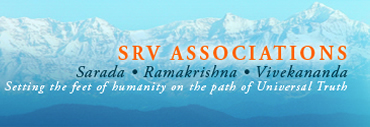Student Notebook
Article Index
Consciousness & Knowledge
The worshippers of the Divine Mother propose a path of nondualism termed Shakta-advaita-vada. Shaktadvaitavada leans toward qualified nondualism in that it is a philosophical perspective founded on the experience of Reality as pure Consciousness. Its primary directive is to manifest the Soul's inherent perfection (Siddhi). Its secondary directive is to free the soul from cycles of rebirth (Karmabandha), and its result is the awakening of the Kundalini to reveal Atman via Pure mind (Chit shuddhi).
Regarding this twin directive and its accomplishment, for individuals in the world there are two possibilities or tendencies – souls that dissolve into Brahman and reform their minds later, versus those who dissolve their minds into the world. It is nearly impossible to extract the mind from body, matter, and senses. That the luminaries can do this is nothing short of miraculous, but most beings either skirt spirituality altogether, or simply give in to the world. Once this occurs, it is like scattering mustard seeds in the wind, meaning that the mind's thoughts are extremely difficult to gather back and focus upon Reality.
The Two Truths of Supreme Knowledge, Pratibha:
Pratibha is the Inherent Nature or Knowledge in each person. With regard to Origins, this Knowledge is Self-Revelatory. It is not sense born. It is also called Parasamvit, Chitshakti, and Prajna. The nature of this Knowledge is Divine Dynamism and is considered feminine, the Divine Mother. It is called by various names expressing different aspects of its nature:
Guru Tattva - The inner guiding principle. All are born with this. It is Self-revelatory.
Trikalatita - This Knowledge is beyond time. It did not evolve over time. It is eternal.
Nirmama - This Knowledge is transcendent of "I," "me," and "mine." It is not personalized knowledge like that which the intellect claims for its own.
[Other teachings, intended to clarify correlations and distinctions between Advaita Vedanta and Tantra, were given]:
- The basis of Advaita Vedanta is "All is Brahman."
- The basis of Tantra is Siva & Shakti, the Two who are One.
- The method of Advaita Vedanta is viveka, discrimination between the Real and the unreal, the Eternal and the noneternal.
- The method used in Tantra is Tattvavichara, analysis of cosmic principles from the standpoint that everything is a manifestation of Siva and Shakti.
- Purification of body and mind is achieved in Advaita Vedanta via Tattvajnan and Upasana. Tattvajnan refers to the concentrated inspection of Wisdom principles culminating in knowledge of the Supreme principle, Brahman. Upasana is worshipful meditation.
- Purification of body and mind is achieved in Tantra via Bhuta shuddhi and Chit shuddhi, observation of the rules of purity with regard to places, objects, actions, and mind.
- The conclusion, Siddhanta, to be reached via direct experience in Advaita Vedanta is non-origination: Ajati.
- In Tantra, the basis, method, and purifications make one fit to understand non-origination.
Question: What is the distinction between Viveka and Tattvavichara?
Babaji: Viveka, discrimination, cuts to the chase. It discards the noneternal, the insentient, the unreal. Tattvavichara, however, is the study of principles in terms of their dualities, so that when/if one is faced with dualities one will recognize them. In Vedanta, all name and form, all dualities, are ultimately illusory. In Tantra, it is more to the point that it is all useful, even the negativities.
A mantra or mahavakya in Tantra is, Prabhuddha sarvata tishtet - "Get yourself awakened for all time!"
Still, one's consciousness may be awakened (prakasha) and free (vimarsha), but even this is still "achit" until full awakening comes.

